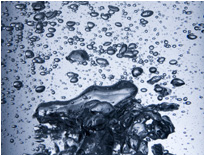Ozone: Understanding Its Green Side

 If you use the words “ozone” and “environment” in the same sentence, most people are going to think of the ozone layer and emissions that may be harming it. Most do not think of manmade ozone and how this remarkable compound yields important environmental benefits.
If you use the words “ozone” and “environment” in the same sentence, most people are going to think of the ozone layer and emissions that may be harming it. Most do not think of manmade ozone and how this remarkable compound yields important environmental benefits.
That lack of widespread awareness of ozone’s positive role stems partly from the fact that many ozone applications are relatively new and unfamiliar. There’s also a simple, kneejerk disconnect because ozone is a chemical — and aren’t all chemicals “bad” in discussions of sustainability and green values?
If one ponders the ultimate green world, where we don’t drive cars or use any type of plastic products, then a whole host of things are bad. But in more realistic conversations where degrees of improvement with respect to energy consumption, water usage and general healthfulness are important, ozone technology enters the picture in significant ways — with significant environmental benefits.
As one who works for an ozone manufacturer, I obviously have a bias. But truth be told, I don’t worry about that so much because making the case for ozone’s use in a variety of settings is easily supported both by history and scientific fact.
Benefits of Ozone
Before we discuss any of those applications and benefits, let’s deal with the only real concern about ozone in environmental terms: It takes electricity to produce ozone. Yes, that’s true, but it is easily argued that when it comes to using energy to sanitize and oxidize water, ozone is an attractive bargain when compared to other common forms of water treatment.
For starters, ozone is an incredibly effective antimicrobial agent (sanitizer) as well as an effective oxidizer. In that respect, it is similar to chlorine — but with some significant added benefits. First, ozone dramatically reduces and, in some applications, entirely replaces the need for a halogen chemical — meaning it reduces the need to manufacture, transport, store and handle chlorine-based products.
Second, in pool/spa applications, ozone stops the formation of chloramines, thereby reducing or eliminating the need for shock treatments. It also works as a micro-flocculating agent, thereby aiding in effective filtration; breaks down biofilm, a major component in waterborne disease outbreaks; and serves as an anti-foaming agent. In doing so, ozone is compatible with chlorine and other treatments, including ultraviolet light or hydrogen peroxide.
By reducing or eliminating the need for chlorine, ozone also addresses widespread concerns about the harmful effects of chlorine byproducts (including the aforementioned chloramines as well as chloroform and trihalomethanes) that stand as the foundation for most problems with chlorination.
Ozone technology also reduces the chemical burden of water released into wastewater systems and storm drains. When a pool or spa is treated with a chlorine compound such as sodium hypochlorite, residual compounds build up in the water and eventually increase to the point where chemical treatment and filtration are no longer as effective as they should be — at which point the water must be partially or completely drained and replaced. With ozone, by contrast, there’s no such buildup, so the need for draining and refilling is dramatically reduced.
Most important, ozone treatment makes water safe. Indeed, it has proved to be the single most effective treatment against some highly problematic waterborne diseases encountered in swimming pool and spa water in the United States and elsewhere.
With Cryptosporidium, a pathogen that has caused an increasing number of recreational-water-related infections during the past 10 years, ozone produces a 99.9% (3 log) reduction — an amazing statistic when compared to the limited performance of other sanitizers. Ozone has also proved to be remarkably effective in killing other harmful pathogens, including Giardia, Pseudomonas aeruginosa, E. coli and Staphylococcus aureus.
That is why as of this writing, the U.S. Centers for Disease Control are getting ready, as part of their first-ever Model Aquatic Health Code, to define and recommend the use of ozone or ultraviolet systems for treatment of public bodies of recreational water as secondary disinfection systems.
That is highly gratifying in that it validates the work ozone-system suppliers have put into developing and scaling systems to all sorts of aquatic applications. But it is just the tip of the iceberg when it comes to other applications and developmental lines we’ve been pursuing.
In the second and final part of this feature article, author Beth Hammil will discuss the many new aquatic applications the ozone industry is exploring. Look for it in the next issue of WaterShapes EXTRA! To read it, click here.
Beth Hamil is Vice President, Corporate Compliance, for Del Ozone, a manufacturer of ozone-generation systems in San Luis Obispo, Calif. She serves on the Water Quality Technical Committee for the Model Aquatic Health Code, the Association of Pool & Spa Professionals’ Recreational Water Quality Committee and as a consultant for state health departments. For more information, go to www.delozone.com.









